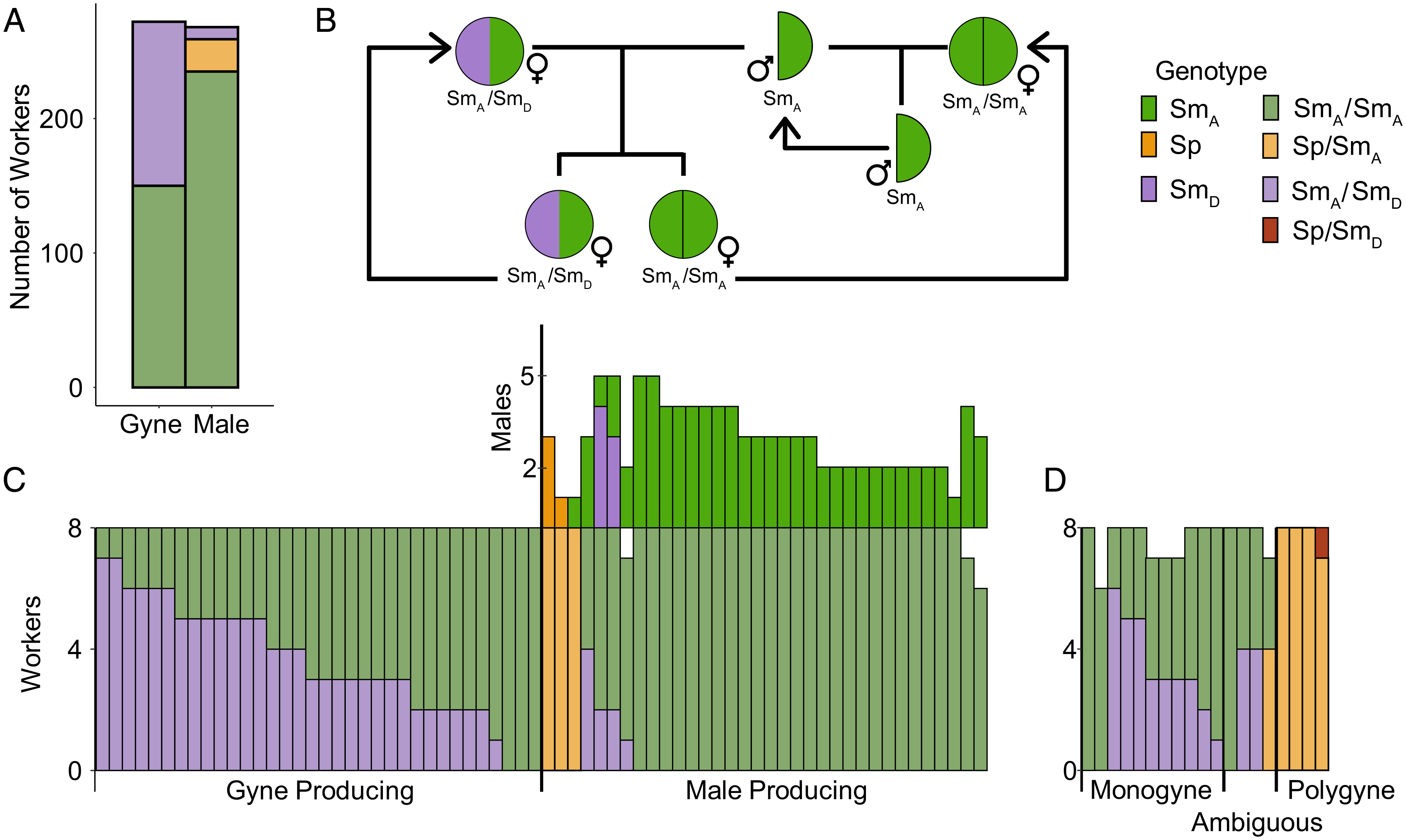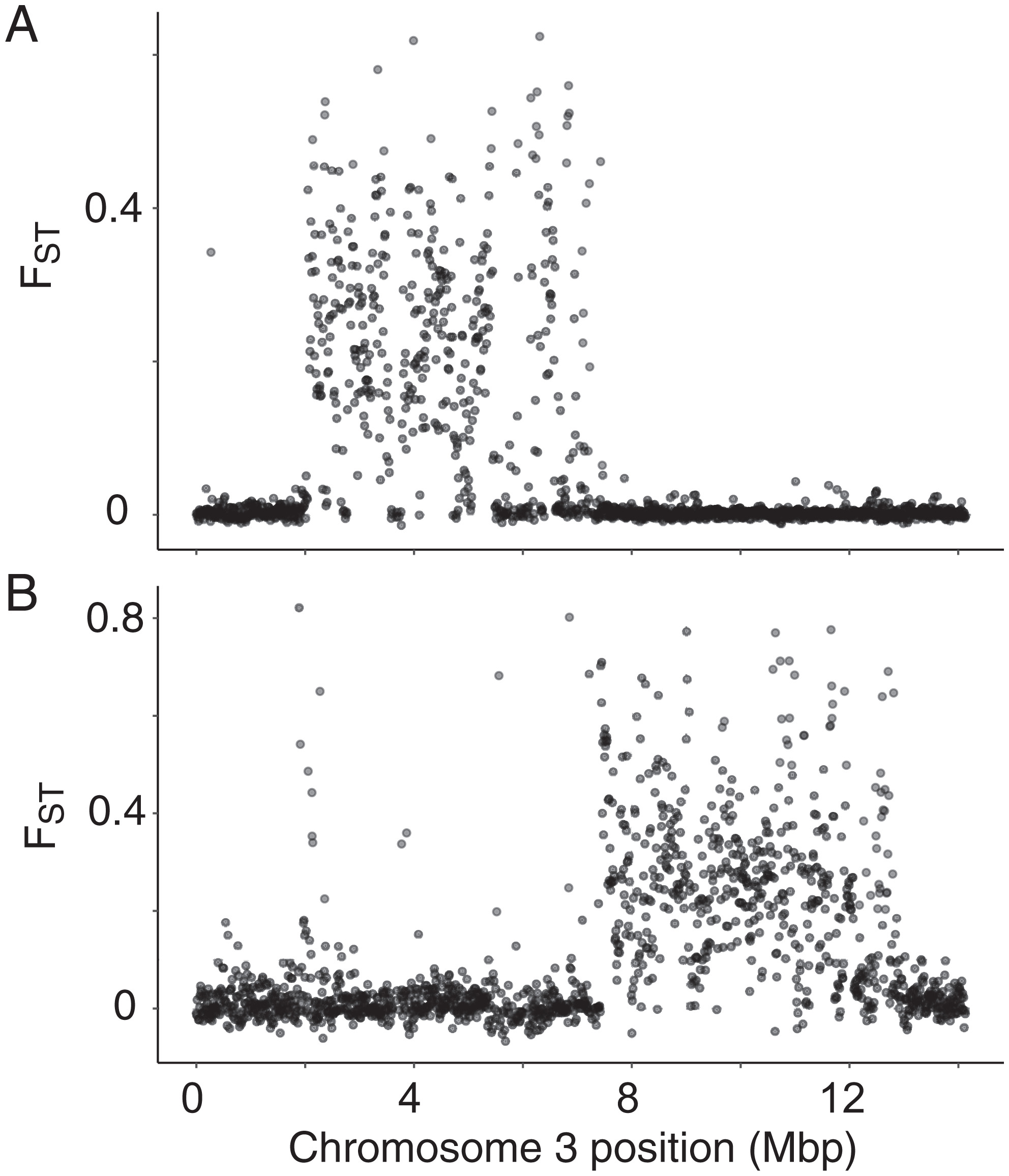Colony sex ratio is controlled by a supergene in some Formica ants
Complex traits that are inherited as simple Mendelian units are fascinating. During my Ph.D. dissertation, I worked in the Formica ant system. Formica ants have a supergene that determines colony queen number that is ~30 million years old (Purcell, Lagunas-Robles, Rabeling, Borowiec, & Brelsford 2021)! I was interested in understanding whether colony sex ratio could be associated with this “social” supergene as colonies specializing in exclusively producing males are expected to have many queens (=polygyne) and colonies specializing in producing exclusively future queens (or gynes) are expected to have a single queen (=monogyne). There is an elegant body of literature on sex ratios in ants and I cannot do it justice here but see Meunier et. al. 2008 for a review. I hypothesized that colonies with the M haplotype (monogyne-associated in other Formica species) would exclusively produce gynes and colonies with P haplotype (polygyne-associated in other Formica species) would exclusively produce males.

Figure 4 from (Lagunas-Robles, Purcell, & Brelsford 2021, PNAS): A) Genotype count in the population between colonies exclusively producing gynes and colonies exclusively producing males. B) Proposed inhertiance mechanism. C) Colony level genotypes between gyne producing and male producing colonies showing the MD is associated with producing gynes. D) Using colonies spread across the Alaska, British Columbia, and Alberta, we found a similar distribution of genotypes with all the colonies with the P haplotype producing males.
Instead, my collaborators and I found something unexpected! There were two M haplotypes, the MD and the MA (Lagunas-Robles, Purcell, & Brelsford 2021). Colonies that were heterozygous for the MD were producing gynes, while colonies that were homozygous for the MA were producing males. The P haplotype was present in our population at a low frequency and the colonies with a P haplotype were producing males.

Figure 2 from (Lagunas-Robles, Purcell, & Brelsford 2021, PNAS): A) Genetic differentiation between MD/MA workers vs MA/MA workers. B) Genetic differentiation between P/MA workers vs MA/MA workers.
Additionally, we found that the P haplotype had reduced in size. In the species Formica glacialis, instead of spanning ~2Mbp-12.5Mbp, the P haplotype only spanned the second half of that region ~7.5Mbp-12.5Mbp. The MD and the MA haplotypes are differentiated from ~2Mbp-7.5Mbp. This work showed that the ancient supergene is still dynamic and capable of being linked to additional phenotypes!
Supercoloniality is not as simple as having the ancient polygyne-associated haplotype in some Formica species
Work in another group of Formica species that are recognized for their supercolonial nature lack the P haplotype (Lagunas-Robles, Alam, & Brelsford 2024), in review. The social organization strategy being examined is thought of as an exaggerated form of polydomous polygynous social organization, where many nests are interconnected and share resources. It was surprising to only find M haplotypes in all the polygyne nests in three different supercolonies. This suggests that the ancient P haplotype is not necessary for polygyne nests in some Formica species and that supercoloniality may not simply be an extension of polygyny.
